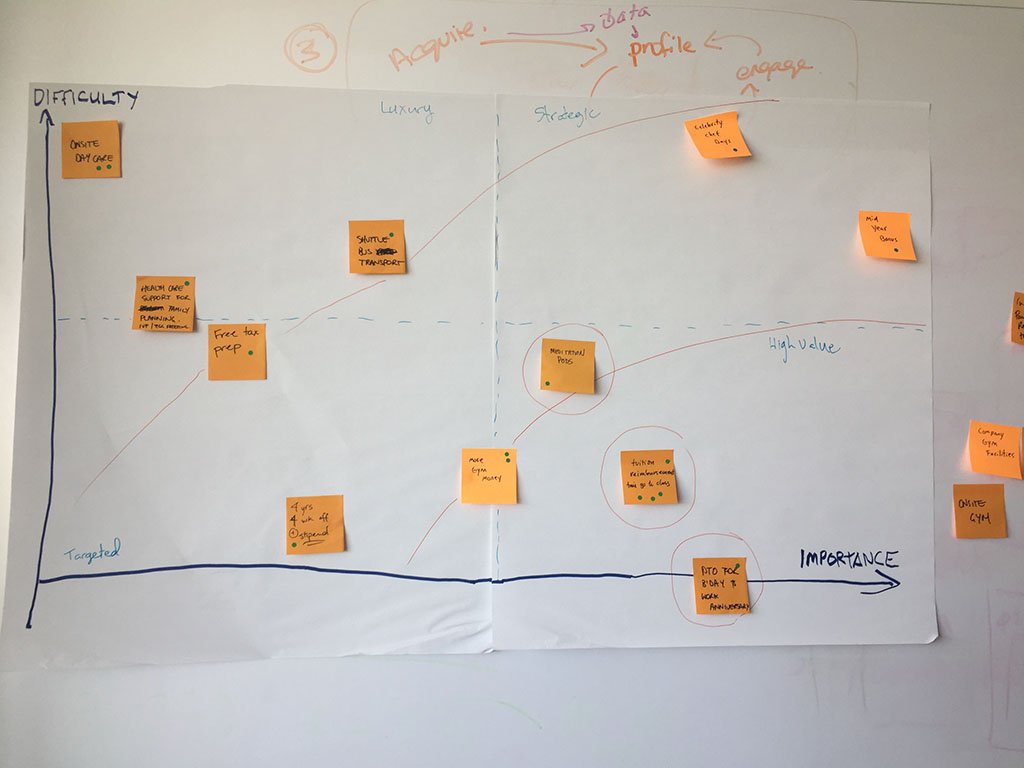What can the Difficulty and Importance Matrix do for your design culture?
The Difficulty and Importance Matrix is a useful exercise for prioritizing your team’s ideas and it can readily resolve into an actionable plan. Mel Clarke, designer extraordinaire, walked us through an exercise using the topic of employee benefits and perks in order get a better understanding of how it works.
We first came up with all our ideas by each writing proposed employee benefits on post-it notes. It’s important not to reveal the x and y axis yet, but simply cluster all the post-its and put it to a vote. In this case each person had 5 votes via green, round stickers. This resulted in about a dozen top ideas to work with.
Next we stacked the ideas using only the x-axis, a rank of importance. The y-axis, difficulty, was only revealed after we completed the stacked ranking of importance (x-axis). Next steps were to move each post-it vertically and up into the y-axis to assign its relative difficulty.
The next reveal was adding the dashed lines that defined each quadrant along with their labels: Targeted, High Value, Strategic and Luxury. Another layer of arcs were added for more designated zones. It was at this juncture that it really hit me where I spend most of my time as a designer lately. Unfortunately, it was not so much in the strategic quadrant.
Each quadrant is labeled: Targeted, High Value, Strategic and Luxury
The added value for me beyond a good prioritization tool is a rather stunning correlation between these quadrants of work and Jared Spool’s article on the spectrum of design styles. Spool states that the most skilled teams can flex between all four of these quadrants while having the awareness and maturity to match the appropriate design methodology whether it be Self Design, Activity Based Design through to User Centered Design (UCD).
This image can be quite powerful in exposing an organization’s design culture by simply tabulating how design happens across these quadrants. So for example, if your company spends most of its time in the bottom two quadrants, design is rarely conducted as a strategic piece of work, and most likely UCD never really gets off the ground. Not only could this lead to stagnation in design innovation, but it can also contribute to a narrow minded design culture across the entire company.
References
How to Use Design Thinking Methods to Improve Your Nonprofit’s Strategy and Measurement5 Design Decision Styles. What’s Yours?